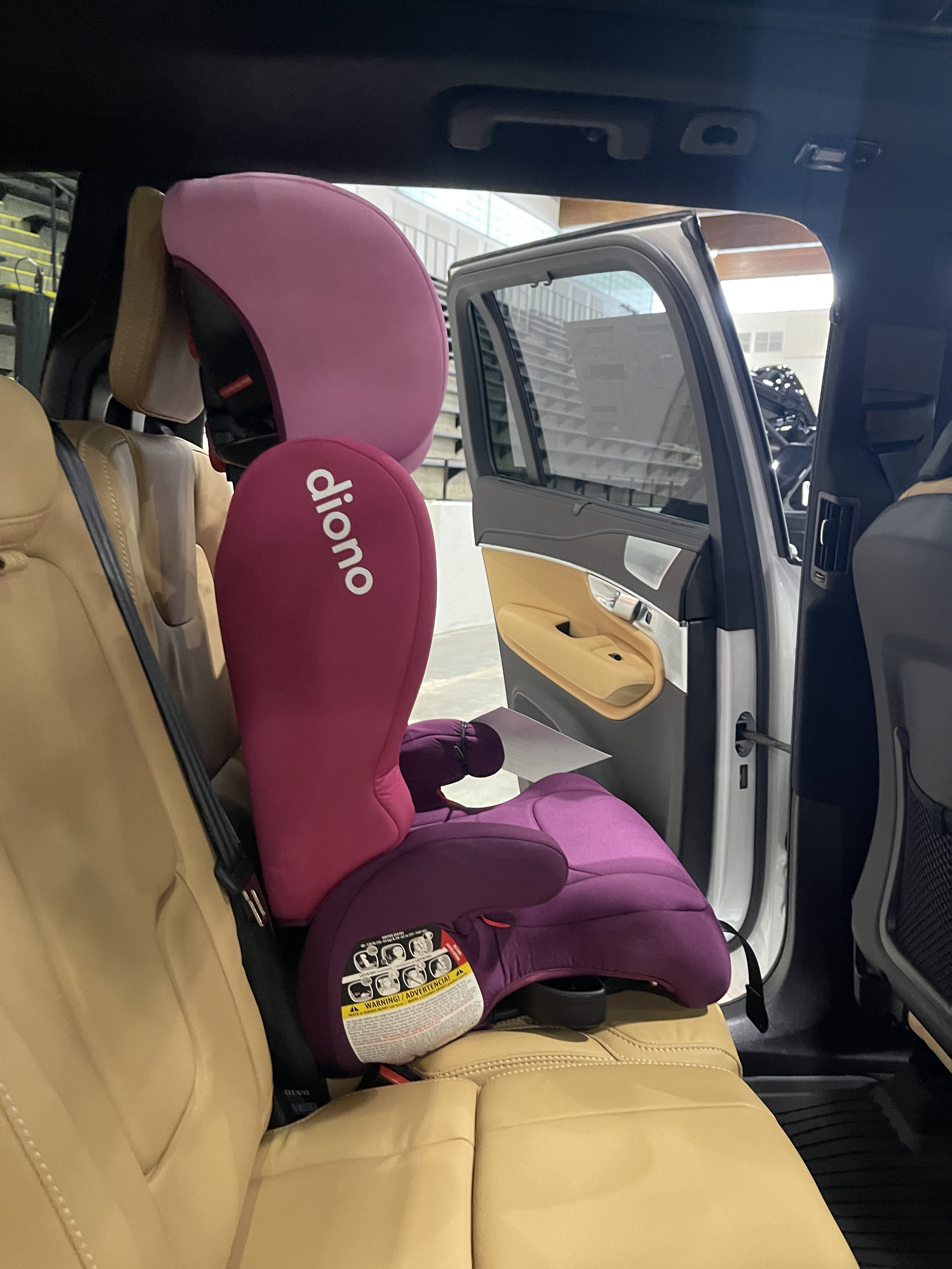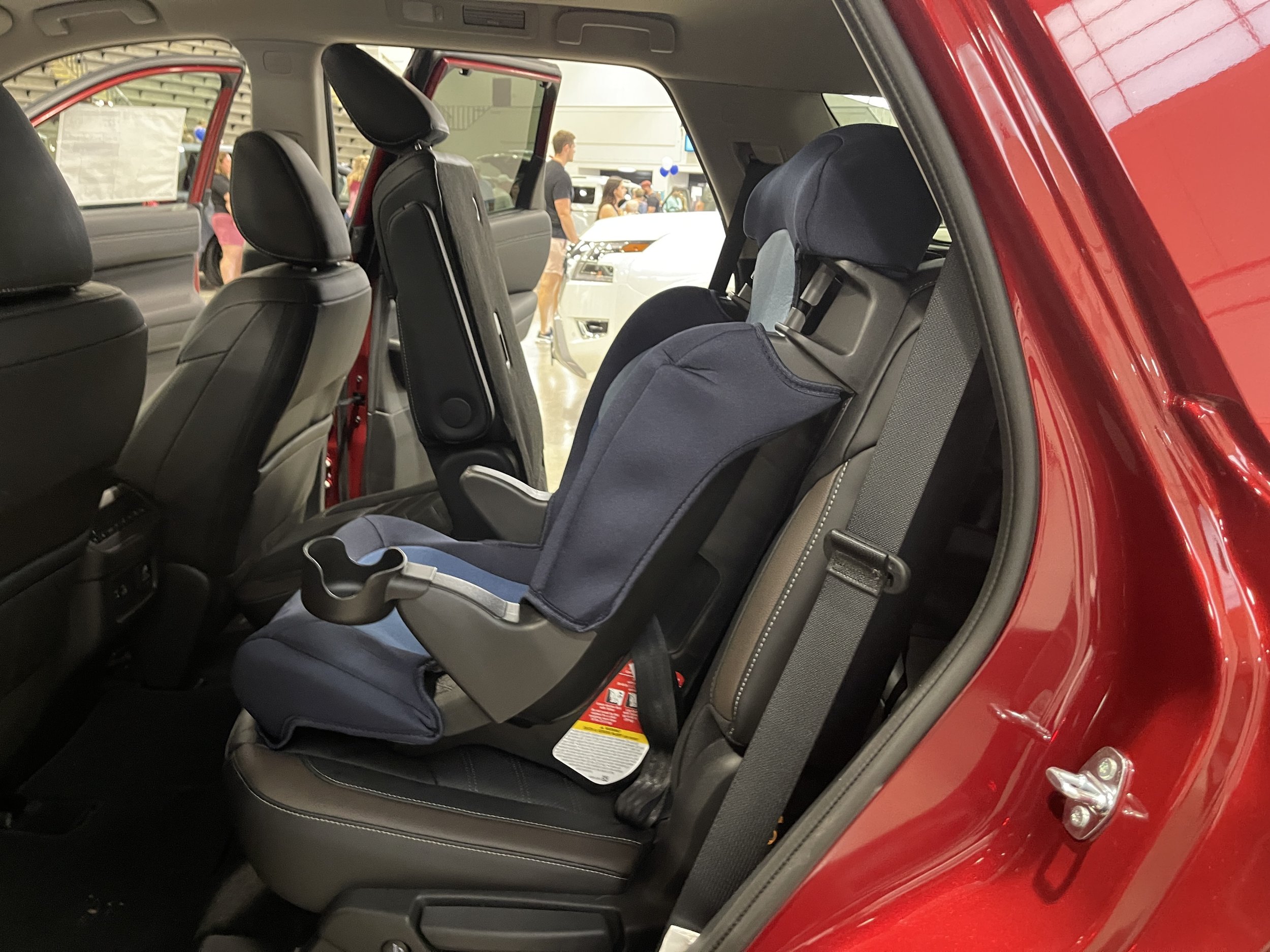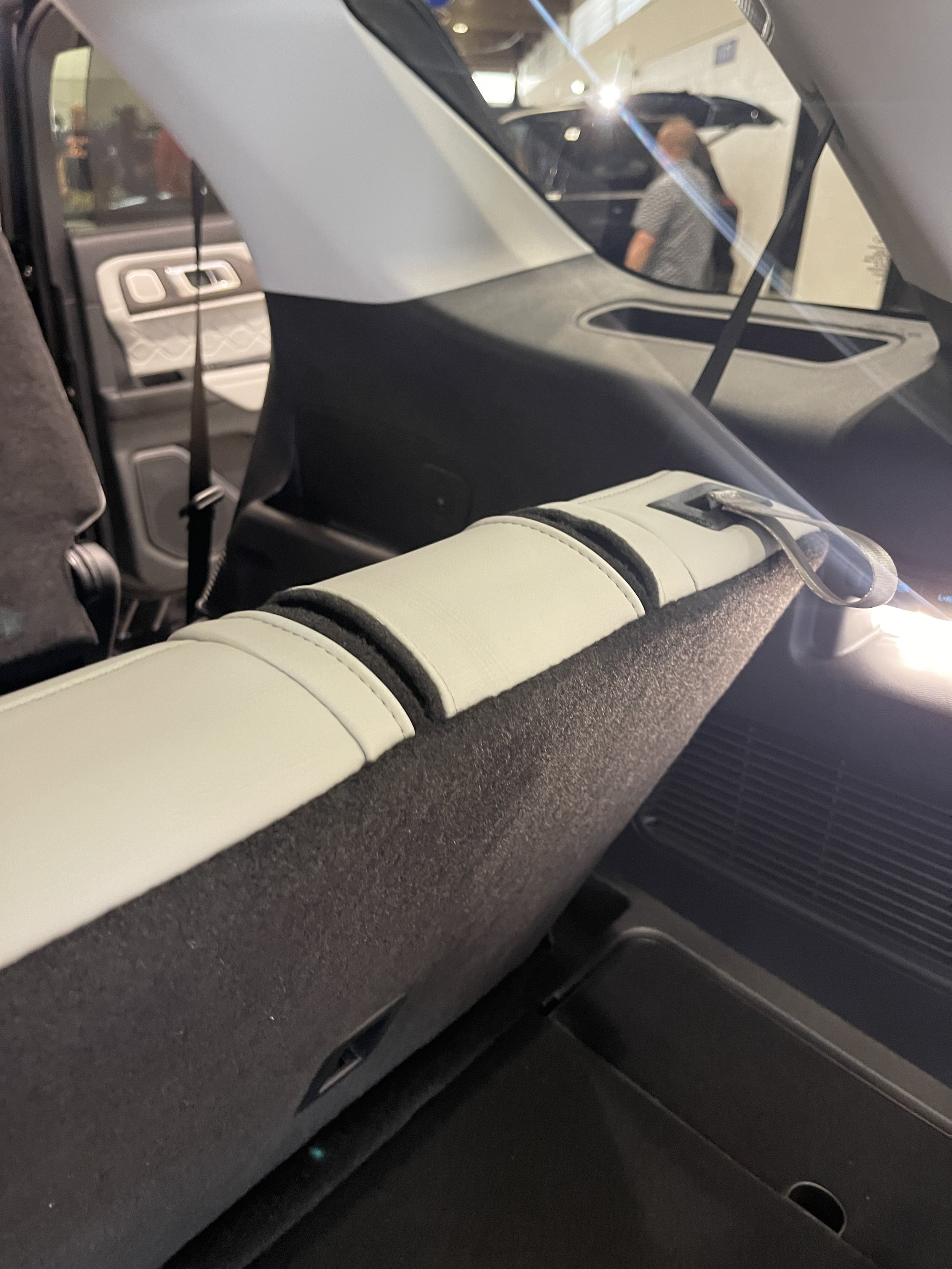Can Non-Removable Headrests Work With Car Seats?
Trying to make a car seat combination work in your car, but the headrests are proving to be impossible?
Car seat combinations are already one of the most difficult parts of making your family car functional, but when headrests are added to the mix, it can make an otherwise perfect setup completely unsafe. So, how do you navigate a safe and usable car seat installation with a non-removable headrest? I’ll walk you through exactly what you need to know.
If you’re new here—I’m Kelly the Car Mom and helping families find the best car and car seat for their needs is my thing. I’m a Child Passenger Safety Technician (CPST), mom of four, and if there is one thing I know better than anything, it’s how to set up a family car to make it work for any family’s needs.
Let’s break down absolutely everything you need to know about non-removable headrests when it comes to their safety with a car seat. Most importantly, I’ll discuss which car seats work best with these tricky head restraints.
What Is A Non-Removable Headrest?
A non-removable headrest is just like what it sounds – a headrestraint fixed to the back of a vehicle’s seat. They are designed to restrain your head in the event of a collision to prevent or greatly reduce whiplash injuries. Without a head restraint, a passenger’s neck has nothing stopping it from flying backward if a collision does occur, risking a severe spinal cord injury.
Head restraints are non-negotiables for all adult and backless booster-riding passengers to ensure they are as safe as possible. But what do non-removable headrests mean for car seat installation?
Why Do Non-Removable Headrests Matter For Car Seats?
The correct installation is key when it comes to ensuring a car seat works properly. For many forward-facing car seats (and almost all boosters) they need to sit flush against the back of a car seats. This becomes an issue when non-removable headrests are thrown into the mix, resulting in potential injuries that could have been avoided.
Oftentimes these headrests are angled forward, meaning the car seat is pushed forward (even a few inches) creating a gap and compromising the integrity of a car seat. For example, the Infiniti QX80 has these headrests in the third row making car seat setup virtually impossible. If this was my family car, I would not be able to drive with all four of my kids because their car seats would be compromised.
Even if non-removable headrests are not angled forward, there can still be compatibility issues when it comes to some of the top car seats on the market. One of my favorite car seats, the Britax Poplar, is known to have a lot of difficulty with non-removable headrests, creating a gap that compromises the safety of this otherwise great seat.
Has This Issue With Non-Removable Headrests And Car Seats Always Been A Problem?
If this seems like a new problem that came out of seemingly nowhere, you’re not wrong. The Federal Safety Standard for Head Restraints (FMVSS 202a) was updated in 2010 and minimized how much space is allowed between the back of an occupant’s head and the head restraint.
A 2023 report validated the updates from 2010, showing a significant reduction in whiplash injuries following the regulatory change. In an effort from car manufacturers to best protect their occupants, this meant including non-removable forward-angled head restraints to help minimize gaps in adult passengers. This is a great win for safety but proves to be a huge issue when trying to navigate a car seat setup.
Does My Car Have These? How Do I Know?
Your car’s manual will tell you if the head restraints are removable or not. Keep in mind the restraints in the second row may be removable, but not the third. Or maybe only a center seating position is removable. Each car is unique (including each car’s model year) so the manual is a great way to be 100% sure.
A pro tip for finding this information is to look at the online version of your car manual. When the document opens you can “find in the document” and type: “head restraint”. Then you’ll be taken directly to the section where the key information is found.
If you’ve tried to remove your headrests and they do not budge, this is not a complete indication they are not removable. Sometimes, you have to insert a card or coin to release the restraint – double-check your manual if you’re unsure.
My Headrests Are NOT Removable… Is This A Problem?
There is no definite answer to this question… it all depends on the type of car seat you’re installing and the brand you choose. To know with 100% certainty your car seat will work with a non-removable headrest, follow these steps:
Install your car seat. Does it lay flat against the vehicle seatback or is there a gap?
Check the car seat manual. See what the manufacturer says about the installation. This step can get confusing, reach out to your car seat manufacturer for clarification. They are very helpful and know the way the car seat should look.
Also, make sure you are looking at the difference between booster mode and harness mode when checking if that gap does not compromise the car seat’s performance. For example, the really popular Graco SlimFit3 LX (which I love) does not mention gap issues when installing the seat using harness mode, but says it is NOT okay when installing using booster mode.
This goes to show every car seat installed with headrests is specific to your car and your needs, so just because it works in one scenario, doesn’t mean it will work in every scenario. For additional help, I HIGHLY recommend using the National Child Passenger Safety Certification Services for help to find a place to get your car seat professionally checked near you.
Which Car Seat Should I Buy If My Headrest Is NOT Removable?
Headrests become a concern AFTER your child grows out of their rear-facing car seat. From there, you can look at both convertible seats and forward-facing car seats. Headrests are not a concern when it comes to using a convertible car seat in rear-facing mode, but only some will work in forward-facing mode.
So let’s break down all the car seats I’ve tested with non-removable headrests and what I recommend will work well in a large variety of family cars:
Convertible Car Seats:
Graco SlimFit3LX 3-in-1: Not only is this the 3 across MVP, but it also works incredibly well with tricky head restraints. Graco allows a gap in harness mode, but it also tends to fit perfectly where there isn’t a gap anyway because of the shape of the car seat shell. It’s versatile enough to fit in nearly every seating position.
Nuna Rava: This is my top pick for the Volvo XC90 head restraints. They are particularly forward-angled and the Rava works like a charm. It will also work in other cars, but it’s my go-to Volvo suggestion whenever families ask.
Chicco Fit360: One of my most recommended car seats that also works well with tricky head restraints. If you’re looking for a rotating seat, this is a great option to consider.
Booster Car Seats:
Diono Cambria 2: If you have an older/bigger booster rider, this is my number one recommendation if you have a non-removable head restraint or not. It’s comfortable, spacious, and allows for a gap. Not every car seat will (and this is where the lack of compatability comes in) but this is one of the few that DOES allow for a gap.
Evenflo GoTime LX: I don’t love this seat, but it’s one that works with these tricky head restraints because it allows a gap. This is a better choice for younger/smaller booster riders who may struggle to get a good belt fit on the Diono.
Nuna Aace: This is a sleek and comfortable booster, but I’ve gotten mixed feedback about whether or not a gap is permitted without using the lower anchors. Many third rows don’t have lower anchors but do have tricky head restraints, so that’s not a great combination. If you don’t have lower anchors available, I recommend sending a photo of your installation to Nuna and getting their approval.
Have you ever had issues with a car seat setup because of headrests? Let me know in the comments! And to keep up with all the latest when it comes to family cars, check out my recent posts:







